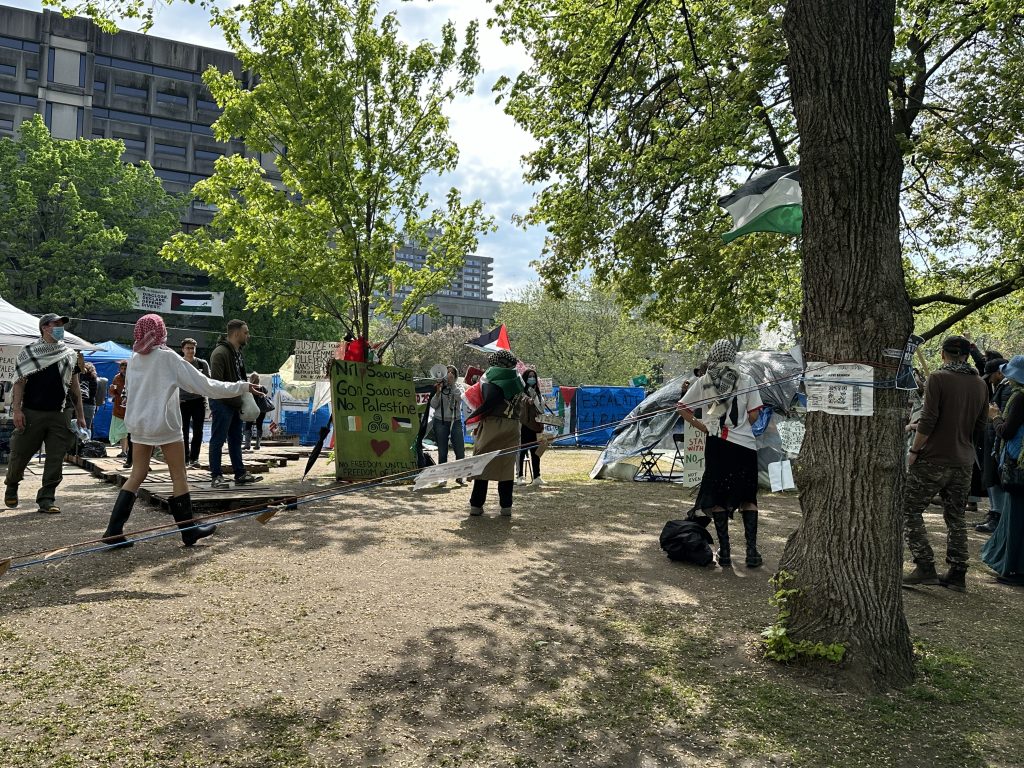The women of Montreal’s Chinatown: Resilience and history through art and archives
Posted May 12, 2023 10:49 pm.
Last Updated May 12, 2023 11:16 pm.
“We can all be experts in our own story,” said Montreal artist Karen Tam.
“To talk about and highlight the experience and stories of the Chinese women in Montreal. Their contribution to the community, to Montreal,”
May is Asian heritage month and Chinese Canadian artist Karen Tam highlights and honours the contribution of the women of Montreal’s Chinatown through her exhibition swallowing mountains at the McCord Stewart Museum.
The exhibit looks at the hidden history of Montreal’s Chinatown and the Chinese women who helped build it, using images and artifacts from the museum as well as the community.
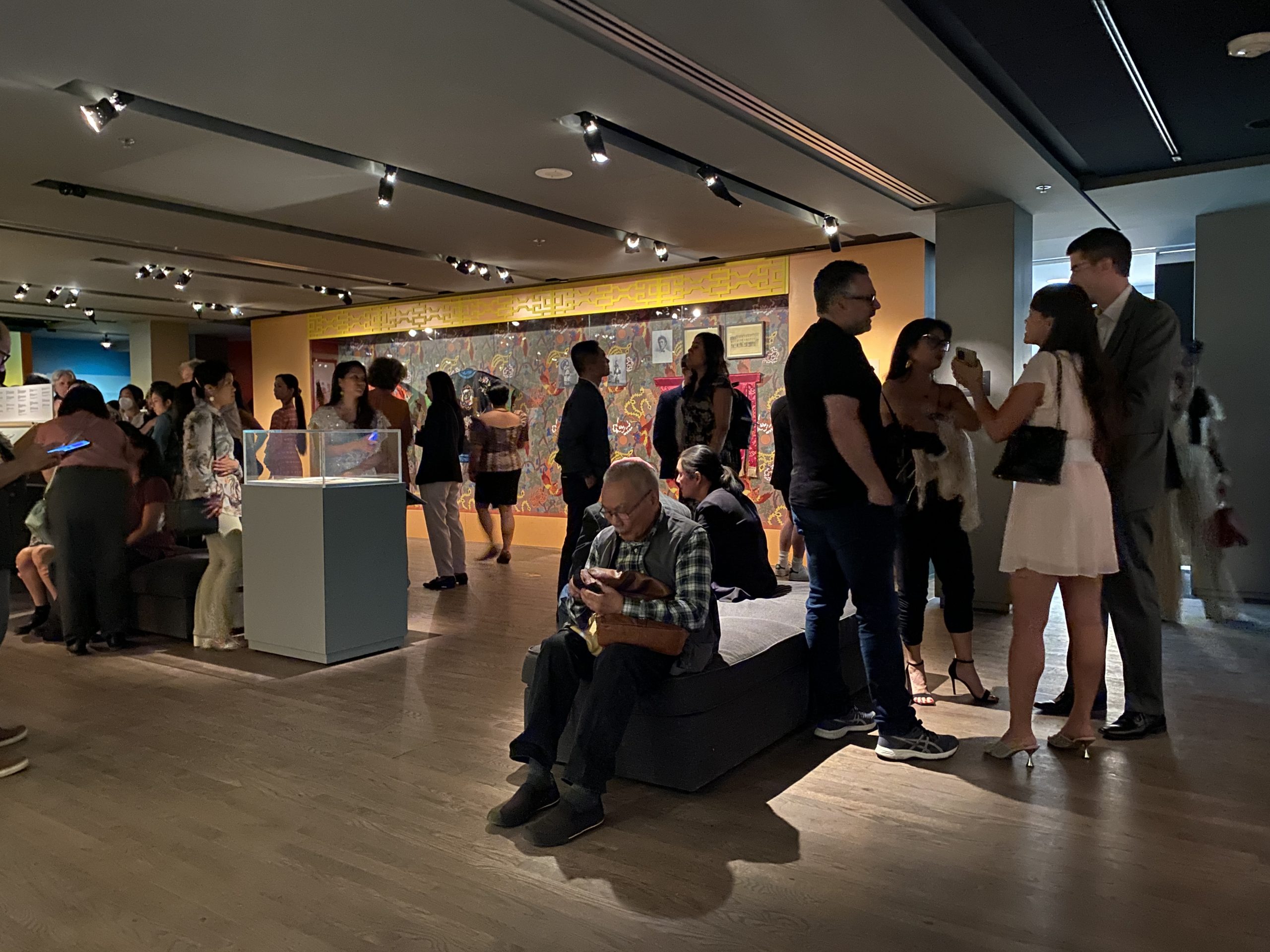
Members of the Chinese community gathers to visit the “Swallowing Mountains” exhibit at the McCord Stewart Museum on May 12.
“This exhibition basically brings together and makes us together. I’ve seen you with artworks that I’ve made myself to objects, documents, treasures from my family, from individuals in the community,” said Tam.
“I wanted this exhibition to focus on the women, the Chinese women of all country. First of all, because whenever we talk about like when we look at the narratives in the history of the Chinese in Canada, we always focus on the men. And that’s partly because of discriminatory legislation in the past that prevented families from being together. And it was the men who came over all right. There’s always been Chinese women.”
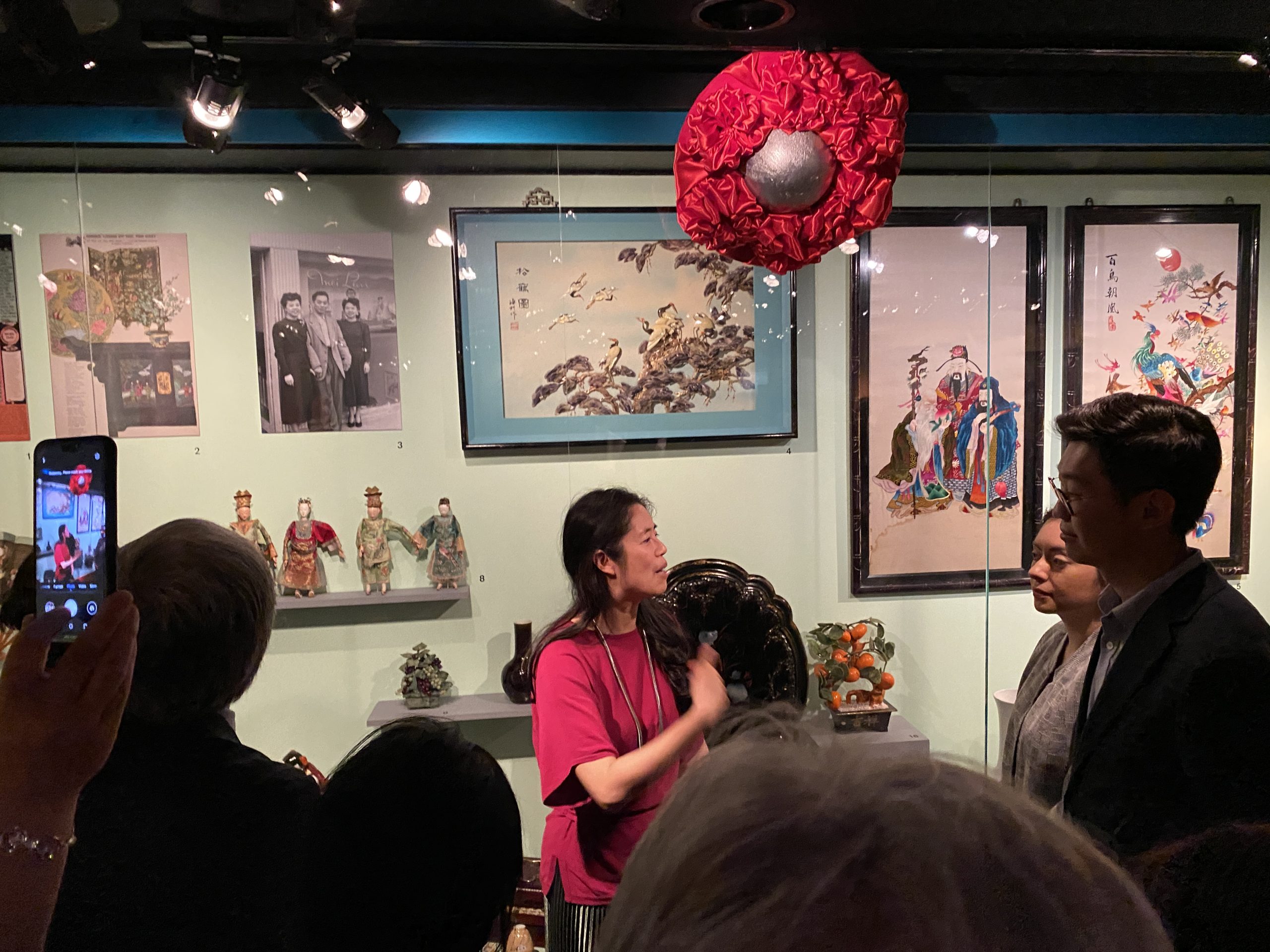
Karen Tam walk people through every piece in the exhibit.
“It’s very humbling experience for someone to witness that actually Canada was not that welcoming at the times there were immigration laws that were very stringent,” said Anne Eschapasse, president and chief executive officer at the McCord Stewart Museum.
2023 marks 100 years since the passing of the Chinese exclusion act, which banned virtually all forms of Chinese immigration to Canada, before it was repealed in 1947.
“That’s kind of what has affected the community since, you know, over generations. So this week archive memory and I guess in a way material culture and how an object has its own history and can tell us stories about itself its journey from the human race where it is now in montreal to the stories of the times,” said Tam.
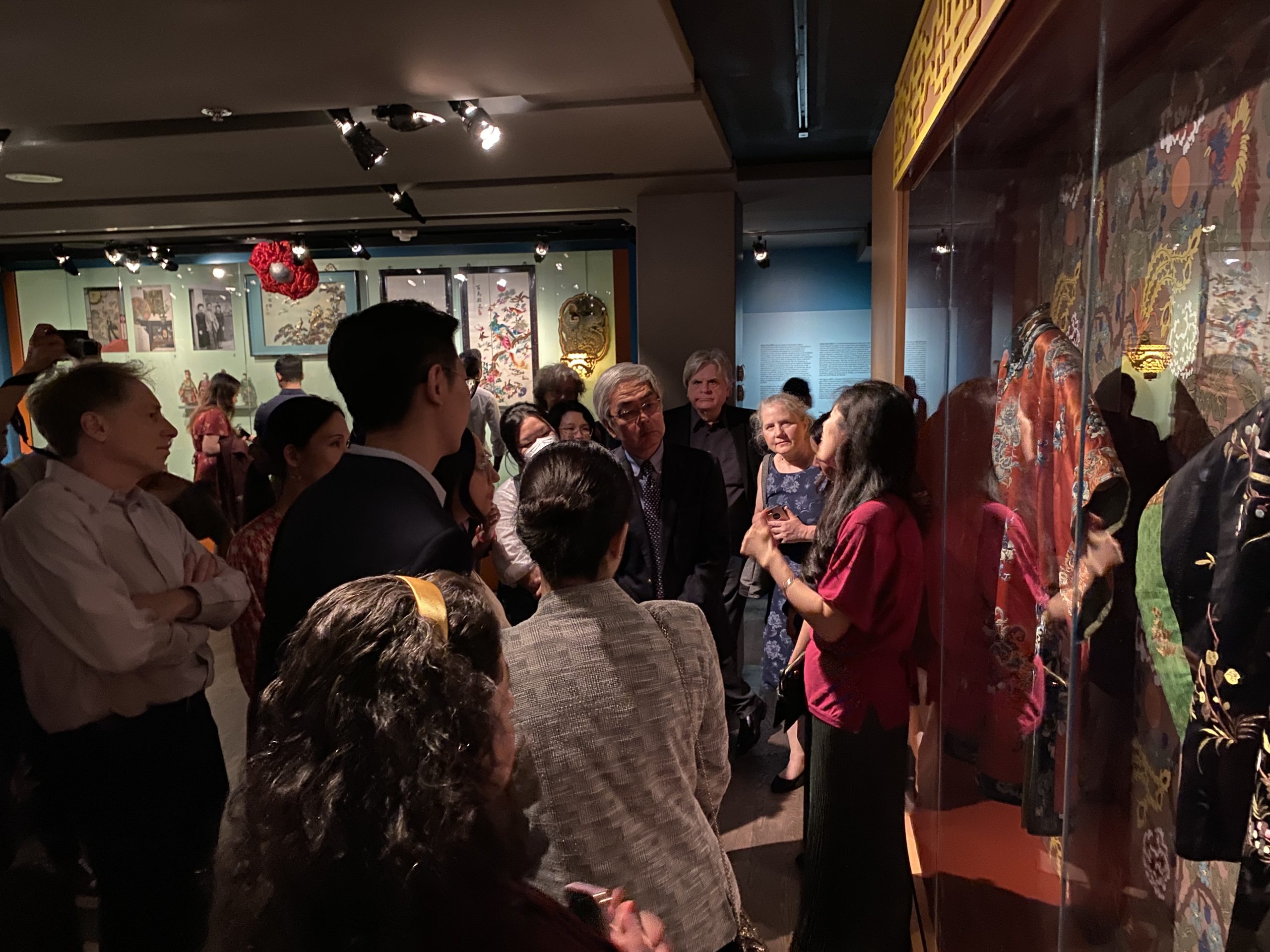
People listening attentively to Karen Tam’s explanations of the works of art and archives.
The name of the exhibit “Swallowing Mountains” comes from “gold mountain” the name given by early Chinese immigrants to North America;
and an old Chinese fable of an old man that lived near two mountains – he one day decided to move the mountains himself with a shovel. He knew he wouldn’t be able to move them completely himself but believed his family through generations of hard work would manage to move them. “Moving mountains” – an expression that speaks strongly to the history and dedication of the Chinese community in Montreal.
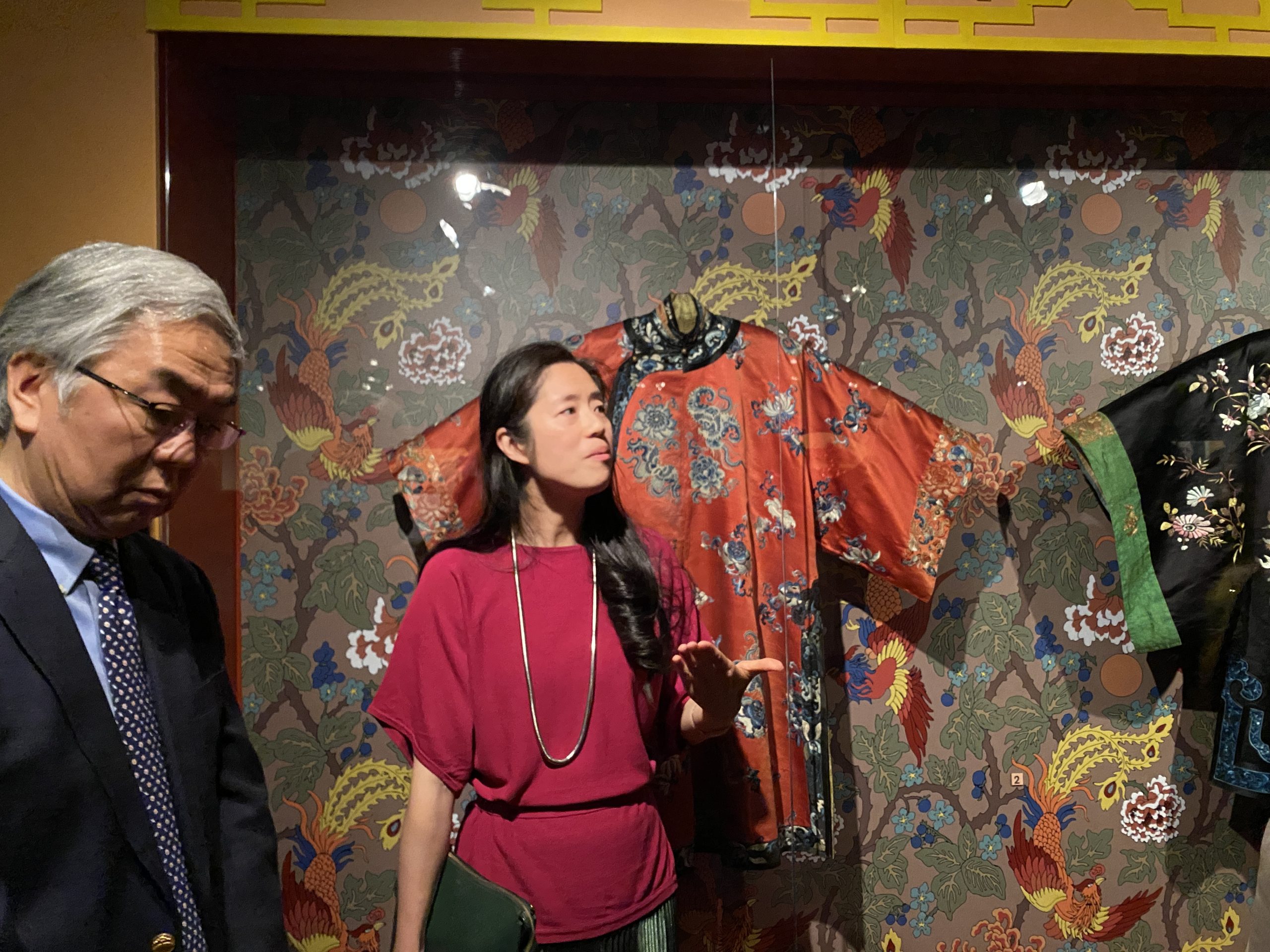
Karen Tam showing her work.
Tam refers to mountains as the distance that separates family – distance from loss through the Chinese exclusion act – families were separated for decades.
“To share with the wider Montreal audience who might not be familiar with those challenges that Chinatown has faced in the past and is facing now,” said Tam.
The exhibit runs until Aug. 13.


